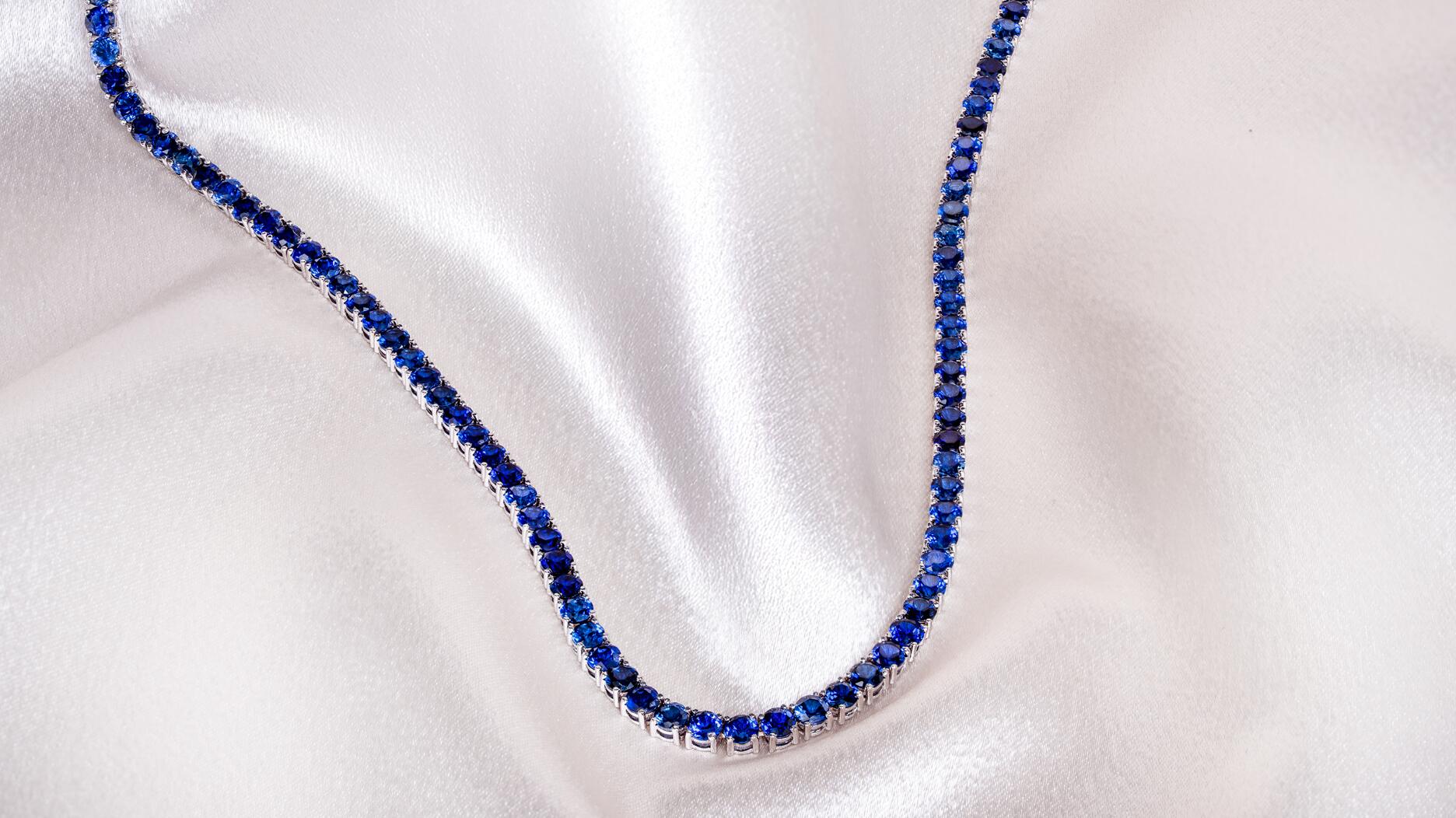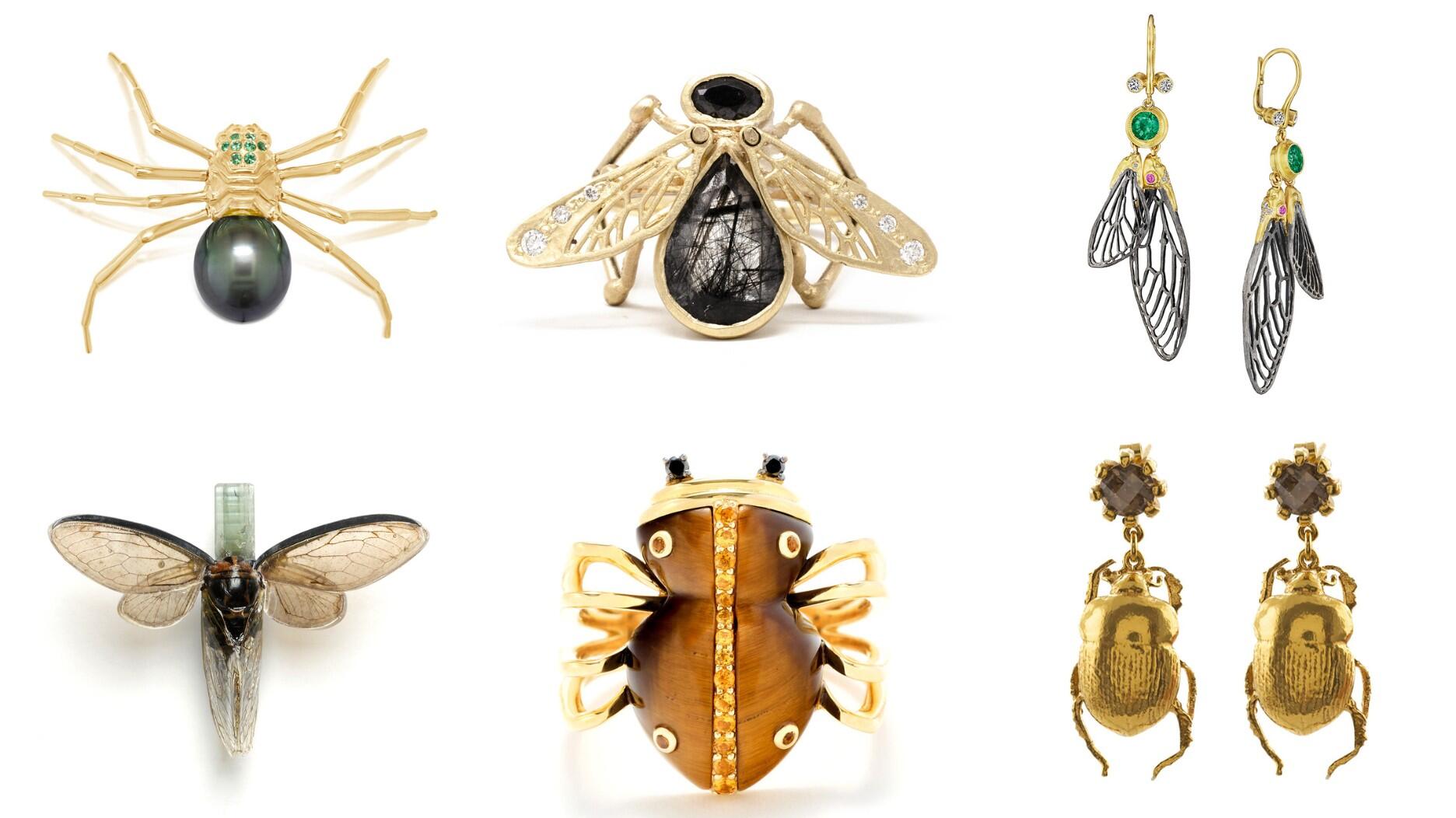Out & About: 7 Great Quotes From Converge in Carlsbad
At Converge 2025, Editor-in-Chief Michelle Graff attended sessions on DEI, tariffs, security, and more. Here are her top takeaways.

Conclave is one of my favorite events on the jewelry industry calendar, and this new take on it did not disappoint. The sessions were engaging, the weather was perfect, and the setting was gorgeous.
Over the course of the three-day event, I attended sessions on diversity, equity, and inclusion; cybercrime; in-store crime; and tariffs, and heard from a renowned neuroscientist.
Here are my favorites quotes from all each of them.
On Diversity, Equity, and Inclusion
“DEI is not a dirty word. It’s not politics; it’s people.”
— Jeffery Bolling, Jeffery B. Jewelers
Bolling’s breakout session on diversity, equity, and inclusion was the first session I attended at Converge and it ended up being one of the best.
In his presentation, “DEI as a Competitive Advantage: Thriving in Today’s Market,” Bolling talked about how having a diverse staff can help companies and brands reach more potential customers, break into new markets, attract and retain top talent, and create an inclusive environment where everybody feels comfortable sharing ideas.
Having a more diverse staff also can prevent companies and brands from putting out tone-deaf ads that alienate certain audiences, and later having to pull those ads and apologize. (Please see: Pepsi’s ill-conceived commercial from 2017 featuring Kendall Jenner, the 2018 backlash over H&M’s green hooded monkey sweatshirt, and, just last month, the “slanted eyes” ad Swatch had to pull after an uproar on social media in China.)
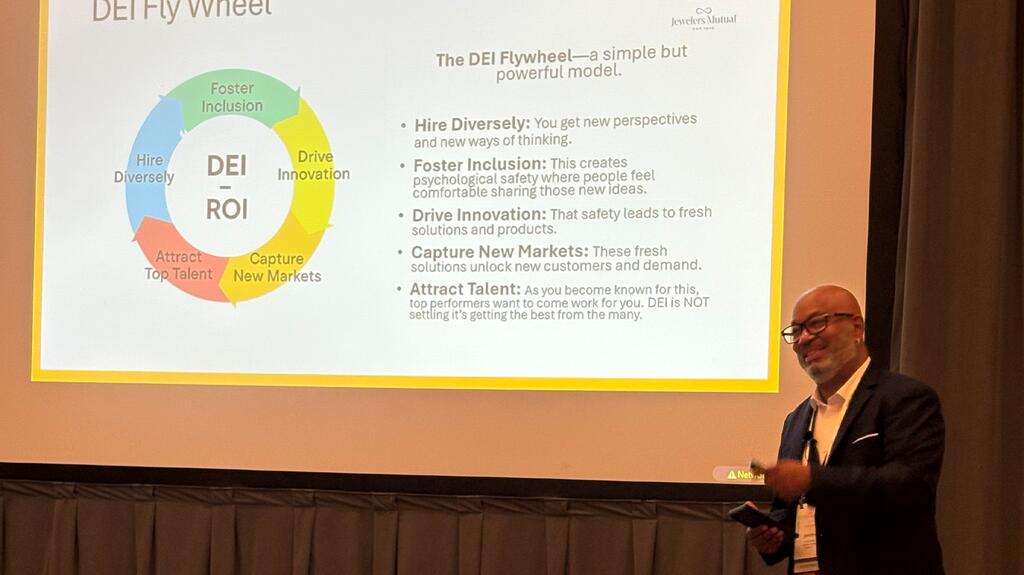
Bolling, a Black man, also shared a difficult but, unfortunately for so many, relatable story about how early on in his career, a woman came into the jewelry store where he was working and told him he was an “affirmative action hire.”
She then proceeded to have him follow her from showcase to showcase while she berated him over his lack of product knowledge.
While she was wrong on so many levels, Bolling acknowledged she was right about one thing—he didn’t know enough about watches and jewelry.
The incident pushed him to learn everything he could about diamonds, gemstones, and watches, which is what makes him the knowledgeable and successful jeweler he is today.
As for that extremely impolite customer? Bolling never saw her again, but he was looking for her.
“I was always waiting on that lady to show up so I could show her that I deserved to be here,” he said.
On the Beauty of Being Deficient
“A seed is a complete seed but a deficient tree. What’s beautiful about the seed is its possibility to evolve into the tree. If we weren’t deficient, we could never evolve. Deficiency is an amazing, beautiful thing.
“We’re always a complete seed at any moment in time, but part of being complete is our possibility to become. And life is always about becoming; it’s never about reaching a destination. We’re always becoming, and we couldn’t become if we don’t, in some sense, have a space in which to become.”
— Beau Lotto, author and professor of neuroscience
I missed Lotto’s opening keynote at Converge, which is a shame because I enjoy bubbles, but I did catch the afternoon breakout session he did with Jewelers Mutual Group’s Mark Smelzer.
In the session, titled “Dr. Beau Lotto: A Deeper Conversation,” Lotto talked one-on-one with Smelzer about adapting to change and thriving in uncertainty, and the importance of meditation and being in nature, which is “fundamental to our brains,” he said.
He also asked the audience what business they were in; one audience member said hospitality, while another said love, both good answers.
For me, the high point of the discussion came at the end of the session, when Lotto talked about the beauty of imperfection, something many of us need to broaden our perspectives on when it comes to both gemstones and life.
On Not Feeling Targeted by Tariffs
“Every industry is dealing with this. This is not directed at the jewelry industry or any other specific industry. All industries are dealing with this issue. When we talk about what’s going on in the tariff landscape, you have to keep that in mind. I think sometimes we feel really targeted, but it’s actually not about us.”
— Sara Yood, Jewelers Vigilance Committee
In my mind, tariffs and lab-grown diamonds tied for the title of Hottest Topic at Converge 2025, so it’s no surprise Yood’s informative session, “Gold, Gems, and Global Headwinds: Trade and Tariffs in Focus,” was packed.
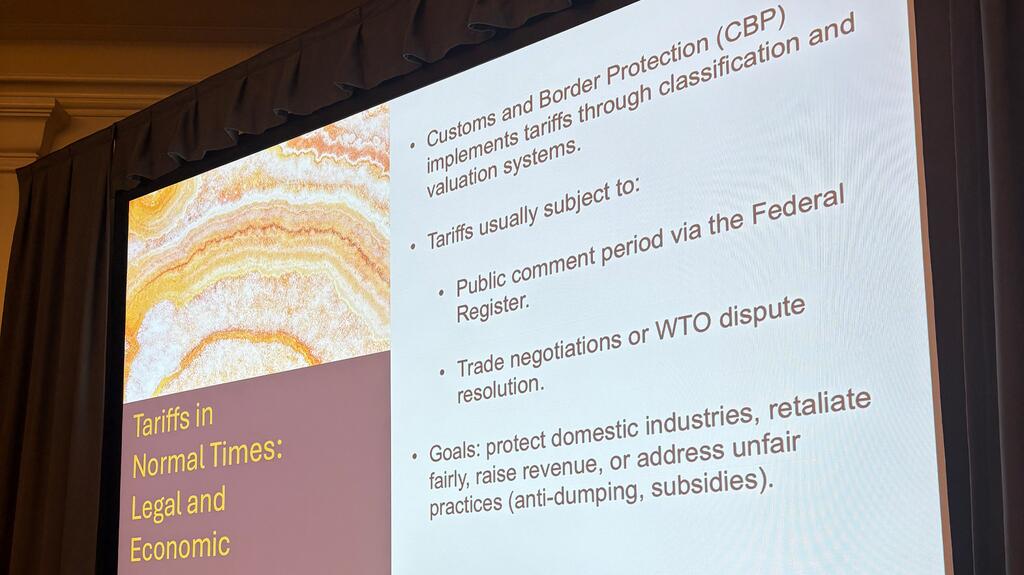
In it, she traced the history of tariffs from 1789—when the U.S. first employed them to raise money to pay off Revolutionary War debt—to the Smoot-Hawley Tariff Act of 1930. The bill was intended to pull the country out of the Great Depression but, as everyone who has seen “Ferris Bueller’s Day Off” knows, it did not work.
Yood also covered the latest development in the ongoing tale of the tariffs.
On Sept. 5, President Donald Trump issued a new executive order on tariffs that added certain categories of gold, mainly investment products and raw gold, to the list of items that are tariff free.
The order also included a new annex, which lists certain categories of natural resources that may be exempt from tariffs if they are imported from countries that reach a trade deal with the United States.
Unset (loose) diamonds, colored gemstones, platinum group metals, and natural pearls are on the list; cultured pearls and lab-grown diamonds are not.
But, again, these items will be exempt only if the country exporting them signs a trade deal with the United States. For some countries—including India (50 percent tariff rate)—it does not seem an agreement will be reached any time in the near future.
So, how and why did this happen?
During the session, Yood explained.
“As you know, there have been a lot of lobbying efforts in every industry, but also within the jewelry industry, and we are very grateful to JA and AGTA and WDC for doing all that work,” she said.
“One of the things they have all been [explaining to lawmakers] is, we need raw materials to make jewelry in the United States, which seems like a thing you want, but we can’t make that if we can’t afford the goods.”
She added, “There have been a lot of industries that have been going to the White House, they’ve been going to Congress, trying to make sure they understand why this is causing such a huge headache for the industry.”
And they’ll continue to go.
Tariffs will be the top issue when Jewelers of America does its annual fly-in to Washington, D.C., later this month. In addition, JA will host a webinar Sept. 22 at 2 p.m. EDT titled “Fighting Tariffs on Capitol Hill.”
The organization also has a Legislative Action Center where members of the industry can reach out to their representatives in Congress and let them know how tariffs are affecting their business.
On Using (or Not Using) Your Gun
“It’s imperative that you be a good witness. You’re going to miss, but the bad person isn’t going to miss, unfortunately, and the stats back me up on that.”
— Steve Gonzalez, FBI (ret.)
I attended two crime/security-focused sessions at Converge and there was plenty to take away from both (see cybersecurity section below).
The frankest security conversation of Converge took place Tuesday during “Cracking the Code: Protecting the Jewelry Industry from Physical & Cyber Threats.”
At one point, the discussion turned to possessing and using firearms, and both Gonzalez—a retired FBI special agent—and fellow panelist Greg “Dutch” Holland-Merten—who served as a Royal Marines commando—advised jewelers not to pull out their gun and start shooting during a robbery.
It’s dangerous and is likely to escalate the situation, leading to potential bodily harm to the jeweler, store staff, customers, and bystanders.
As the Jewelers’ Security Alliance always advises, jewelers should comply with the robbers’ demands and get them out of the store as quickly as possible to minimize risk.
On Cybersecurity
“If [your system] takes too long to hack because you’ve done the basics well, then they’ll just move down the line to someone else.”
— Holland-Merten, HMH Security Consulting
This a Holland-Merten quote from the same cybersecurity session mentioned above, during which he also advised jewelers to double their cybersecurity insurance and to immediately report a ransomware attack to local and national authorities.
Holland-Merten said in Europe, ransomware attacks that involve the theft of personal data must be reported by law, but in the United States, the laws vary by state.
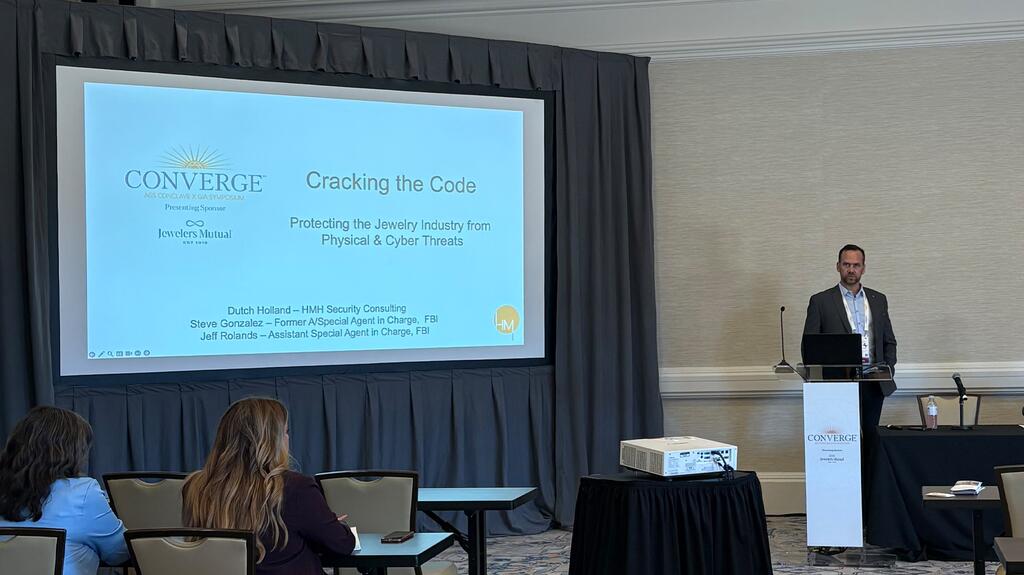
He recommends reporting such attacks nonetheless, noting that if a jeweler, for example, tried to make the problem quietly go away by paying ransom to an individual or organization that turns out to be on the terrorist watchlist, there would be consequences.
Ransomware attacks can be reported via the Internet Crime Complaint center and should include a police report, or at least a police report number.
On the Pitfalls of Oversharing
“I’ve seen a salesperson rattle off 7,000 things they know about this ring and the customer gets overwhelmed. Don’t be a robot spitting out facts.”
— Brandon Heller, Heller Jewelers
Heller was one of three jewelers who participated in a roundtable discussion led by Adam Graham of Josh J Fine Jewelry. Called “Selling Bigger Better,” the conversation focused on the art of selling higher-ticket items and of creating an environment that brings people in and makes them want to stay.
I loved this comment by Heller, which speaks to the dangers of getting caught up in product information instead of engaging in personal conversation with customers, e.g., asking them about their family or their cat. The latter would work on me every time.
One other takeaway—food and alcohol are solid bets for attracting customers.
On Why It’s Good to Do Good
“If we do right, it’s good for the next generation.”
— Shreyans Dholakia, Shree Ramkrishna Exports Pvt. Ltd. (SRK)
I wanted to wrap up my list of favorite Converge quotes on a high note, so I chose this one from Dholakia, the brand custodian of SRK.
Dholakia led a session titled “Sparkling Sustainability: How Natural Diamonds Are Shaping a Responsible World,” and discussed the laundry list of things SRK does to manufacture diamonds in an environmentally responsible way.
He also made an excellent point: Even if luxury consumers aren’t outright asking if the product they are buying was produced “responsibly,” they expect it to be.
It’s the brand’s responsibility to make sure they are meeting the consumer’s expectations, and it’s the retailer’s job to relay that information to the customer.
The Latest

In its annual report, Pinterest noted an increase in searches for brooches, heirloom jewelry, and ‘80s luxury.

Starting Jan. 1, customers can request the service for opal, peridot, and demantoid garnet.

The 111-year-old retailer celebrated the opening of its new location in Salem, New Hampshire, which is its third store in the state.

How Jewelers of America’s 20 Under 40 are leading to ensure a brighter future for the jewelry industry.

The new catalog features its most popular chains as well as new styles.


The filmmaker’s personal F.P. Journe “FFC” prototype was the star of Phillips’ recent record-setting watch auction in New York.

The new location in the Design District pays homage to Miami’s Art Deco heritage and its connection to the ocean.

Roseco’s 704-page catalog showcases new lab-grown diamonds, findings, tools & more—available in print or interactive digital editions.

Inflations, tariffs, and politics—including the government shutdown—were among consumers’ top concerns last month.

“Longtime favorite” presenters, as well as first-time speakers, will lead talks and workshops at the annual event in Tucson next year.

Silas Smith of Meridian Metalworks won the challenge with his pendant that blends Australian and American landscapes.

The sale of the 31.68-carat, sunset-hued stone was part of Sotheby’s first series of events and auctions in Abu Dhabi.

Most customers who walk into your store this month have made up their minds. Your job is to validate their choice, Emmanuel Raheb writes.

The collection features characters and motifs from Ukrainian folklore, including an enchanted mirror and a magic egg.

MatrixGold 3.11, the newest version of the jewelry design program, offers more flexibility, precision, and creative control.

The pavilion will be part of the 2026 JA New York Spring show, scheduled for March 15 to 17.

Kadet, a 1994 National Jeweler Retailer Hall of Fame inductee, helped grow the family-owned retailer in the Chicago area and beyond.

Billed as the world’s smallest wearable, Lumia Health’s new smart earrings have a health tracker subtly embedded in the back.

Don’t let those with December birthdays feel blue. Help them celebrate their month with blue zircon, turquoise, and tanzanite.

The new pink sapphire version of the piece dances with its wearer in the brand’s “Icons After Dark” holiday campaign.

A choice that’s generated a lot of commentary, Pantone says “Cloud Dancer” marks a fresh start and encourages relaxation and creativity.

The manufacturer’s holiday campaign features a gift guide filled with trending designs and jewelry that can be personalized.

The man was charged with theft, accused of ingesting the necklace while in a jewelry store in Auckland, New Zealand.

The Florida independent expanded its store from 8,000 to 14,000 square feet, fulfilling the vision of its late co-founder, Jim Dunn.
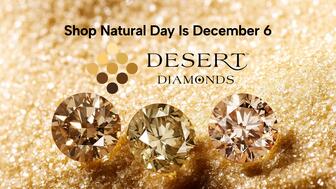
Sponsored by De Beers Group
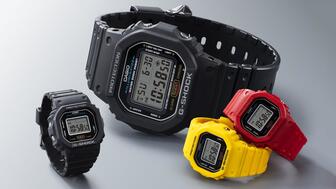
The classic 5600 series G-Shock has been scaled down to about a tenth of its size, becoming a fully functioning watch ring.

The association’s annual conference and gala will take place Feb. 4, 2026, during the Tucson gem shows.














